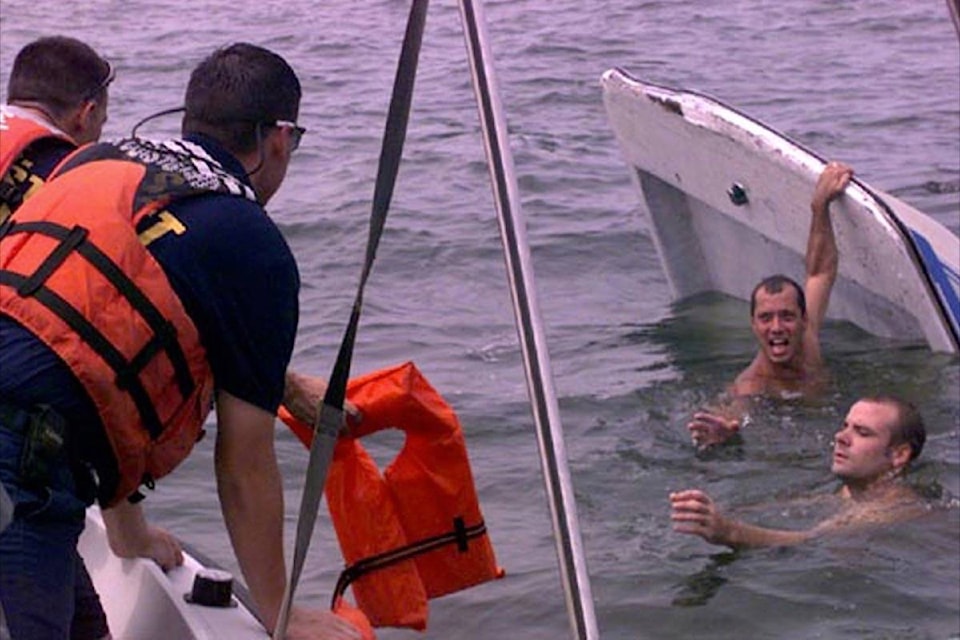A on some larger vessels in Canada in the wake of a 2015 whale watching disaster where six people died.
The coroner’s recommendations echo those made by in spring 2017, and have reawakened a debate about the usefulness of requiring life-jackets.
The in October 2015, killing six British and Australian tourists. The coroner called on Transport Canada to mandate that life-jackets to be worn on the outer decks of vessels larger than 15 gross tons and carrying more than 12 passengers.
As Transport Canada mull its next steps, what do you really know about life-jackets?
1. No one wears them
Life-jackets are recommended anytime you’re in a boat. Unfortunately, a Canadian Red Cross study found that 12 per cent of boating victims were wearing a personal floatation device (PFD).
In case you were wondering how effective they are, a U.K. review of 148 water-related deaths over six years found that half those people would definitely have survived if they’d been wearing some sort of flotation device. It would also save money: the Red Cross study found that mandating life-jackets could save Canada between $200 million to $1 billion per year.
2. Technically, you don’t have to
You have to have a life-jacket on board your vessel but you don’t have to wear one. In the wake of the Leviathan II tragedy, Transport Canada told Black Press Media that the agency “is not proposing mandatory wear of personal flotation devices or lifejackets,” although they are reviewing coroner and Transportation Safety Board recommendations.
3. But keep one onboard, or pony up the dough
The law is to keep at least one life-jacket per person when on the water. It’s a $200 fine for the first missing life-jacket, and $100 for each additional missing PFD.
4. Life-jackets on stand-up paddleboards?
Well, it depends. If you’re using your stand-up paddleboard to get somewhere then it’s considered a human-powered vessel and you need some sort of flotation device. If you use it for surfing, then you don’t need one. No such excuses for canoes or kayaks.
5. Life-jackets vs. PFDs
Did you know there’s a difference? Life-jackets are more buoyant and designed to be worn only when abandoning the vessel in an emergency situation. That’s because they’re meant to keep even an unconscious person safe and afloat by turning them around onto their backs and keeping their face out of the water.
PFDs are less buoyant but more comfortable to wear all the time. However, they won’t flip a person onto their back and are approved for recreational use only.
6. No life-jackets indoors
Standard foam life-jackets aren’t particularly comfortable to wear all the time, and perhaps that’s for good reason. Wearing one inside, instead of on an open deck, runs the risk of getting trapped up against the ceiling if the room floods.
7. No inflatable PFDs for kids
Inflatable PFDs – the kind that inflate on command or when they get submerged – have lots of advantages. That being said, they’re not approved for kids under 16 or anyone weighing under 80 lbs.
8. Don’t just buy any old life-jacket
Some people might look to save a buck and buy a used life-jacket below cost. It’s convenient, but for something meant to save you life it’s not always tbe best idea. Any life-jacket or PFD you buy must be approved by either Transport Canada, the Canadian Coast Guard or Fisheries and Oceans Canada. Life jackets also have an expiry, so make sure to keep track. An easy initial screening tool is colour: life-jackets only come in red, yellow or orange.
9. Bladders and guts, oh my
If you think modern life-jackets are inconvenient, they’ve actually come a long way. In ancient times, people used inflated bladders and animal skins. You can thank Captain Ward, a Royal National Lifeboat Institution inspector in the United Kingdom, who created the first modern life-jacket – a cork vest – in 1854.
10. Who’s most at risk
Almost 90 per cent of boating victims were men between the ages of 15 and 74, despite the fact that various studies compiled by the Red Cross show a similar rate of use both men and women. The Red Cross study found that alcohol was a factor in 43 per cent of boating deaths, and those under the influence were less likely to wear life-jackets.
Like us on and follow us on .



